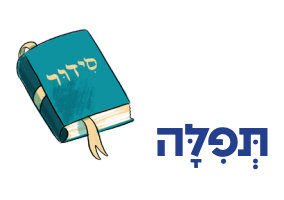Illustration credit: Rebecca Kerzner

Prayer in the Parashah תְּפִלָּה
The Mah Tovu prayer appears in siddurim at the beginning of Shaharit, and it’s customary to say it when entering a prayer space. The opening line of this prayer comes from our parashah. Bilam is trying to curse Benei Yisrael, but instead he says:
מַה טֹּבוּ אֹהָלֶיךָ יַעֲקֹב
מִשְׁכְּנֹתֶיךָ יִשְׂרָאֵל:
Mah tovu (how nice) are your tents, Yaakov,
Your dwellings, Yisrael.
It’s an example of parallelism, a feature of biblical poetry we’ve seen before in Devash! The same idea is repeated twice, using different words.
But according to a midrash, the repetition here actually indicates two different kinds of places:
אֹהָלֶיךָ יַעֲקֹב - אֵלּוּ בָּתֵּי מִדְרָשׁוֹת.
מִשְׁכְּנוֹתֶיךָ יִשְׂרָאֵל - אֵלּוּ בָּתֵּי כְּנֵסִיּוֹת.
“Your tents, Yaakov” – these are batei midrash (places to study Torah).
“Your dwellings, Yisrael” – these are batei knesset (synagogues).
-------------------
-------------------





